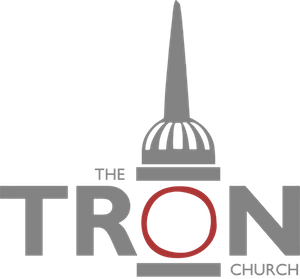"19 On the evening of that day, the first day of the week, the doors being locked where the disciples were for fear of the Jews, Jesus came and stood among them and said to them, “Peace be with you.” 20 When he had said this, he showed them his hands and his side. Then the disciples were glad when they saw the Lord. 21 Jesus said to them again, “Peace be with you. As the Father has sent me, even so I am sending you.” 22 And when he had said this, he breathed on them and said to them, “Receive the Holy Spirit. 23 If you forgive the sins of any, they are forgiven them; if you withhold forgiveness from any, it is withheld.”
24 Now Thomas, one of the Twelve, called the Twin, was not with them when Jesus came. 25 So the other disciples told him, “We have seen the Lord.” But he said to them, “Unless I see in his hands the mark of the nails, and place my finger into the mark of the nails, and place my hand into his side, I will never believe.”
26 Eight days later, his disciples were inside again, and Thomas was with them. Although the doors were locked, Jesus came and stood among them and said, “Peace be with you.” 27 Then he said to Thomas, “Put your finger here, and see my hands; and put out your hand, and place it in my side. Do not disbelieve, but believe.” 28 Thomas answered him, “My Lord and my God!” 29 Jesus said to him, “Have you believed because you have seen me? Blessed are those who have not seen and yet have believed.”
30 Now Jesus did many other signs in the presence of the disciples, which are not written in this book; 31 but these are written so that you may believe that Jesus is the Christ, the Son of God, and that by believing you may have life in his name."
John 20:19-31
The other interpretation of these words (22) is that this is John's way of describing Pentecost itself. What we mean by that is this: John is giving his version of the complete 'movement' of the gospel, just as Luke and Matthew do in their respective accounts, in different ways. In Luke, we have the purely chronological statement of what happened - death, resurrection, promise of the Spirit, ascension, then Pentecost. In Matthew, we have a different pattern, and the commissioning of the disciples and the enduement of power (implied at least) come together. John is still more condensed, telescoping together the rising of Jesus, the bestowal of peace, the commissioning and the enduement of power into the first Easter Sunday. We should bear in mind what John has already said about the Holy Spirit in chapter 7, indicating that the Spirit would be given when Jesus was glorified. John must therefore imply here, in Jesus' words in 22, that Jesus has now been glorified (in His cross and resurrection). Historically, chronologically, Luke's version is the accurate one; but John is writing not chronologically, but theologically; he is giving the theology of the situation, and therefore he can bring together the death and resurrection, and the commissioning of the disciples and their enduement with power and indicate that all are inherent in the very meaning of Easter. John is not saying that everything happened on that first Easter Sunday, but he is saying that the significance of everything belongs to Easter, and that Pentecost is meaningless apart from Easter. This is the true theology of the Holy Spirit, that it is inseparably linked with the death and rising again of Jesus.
